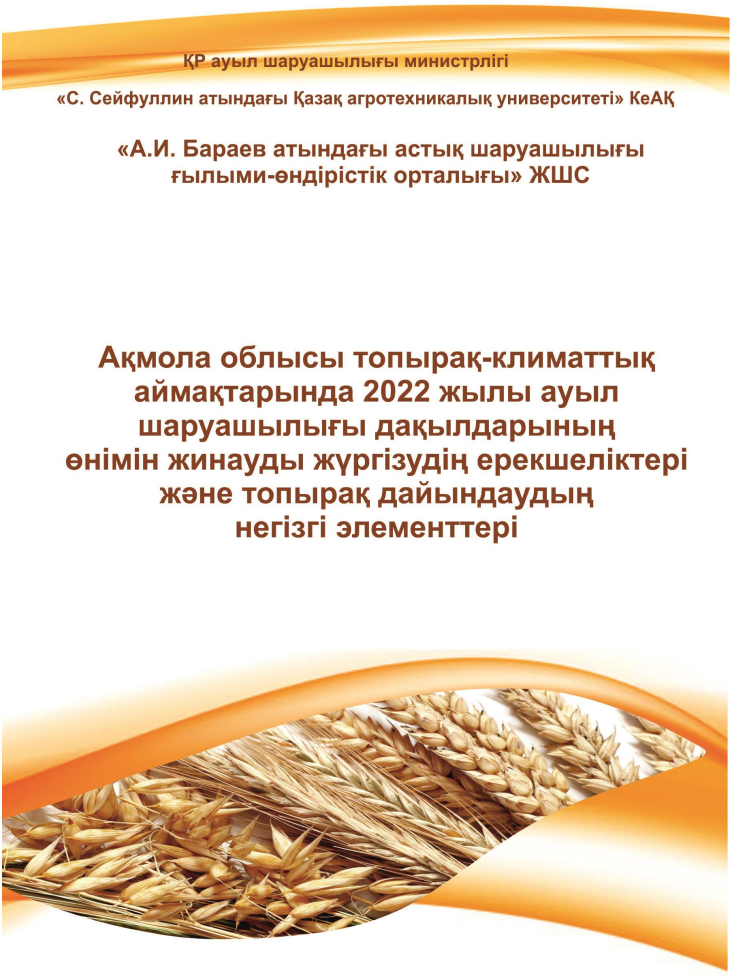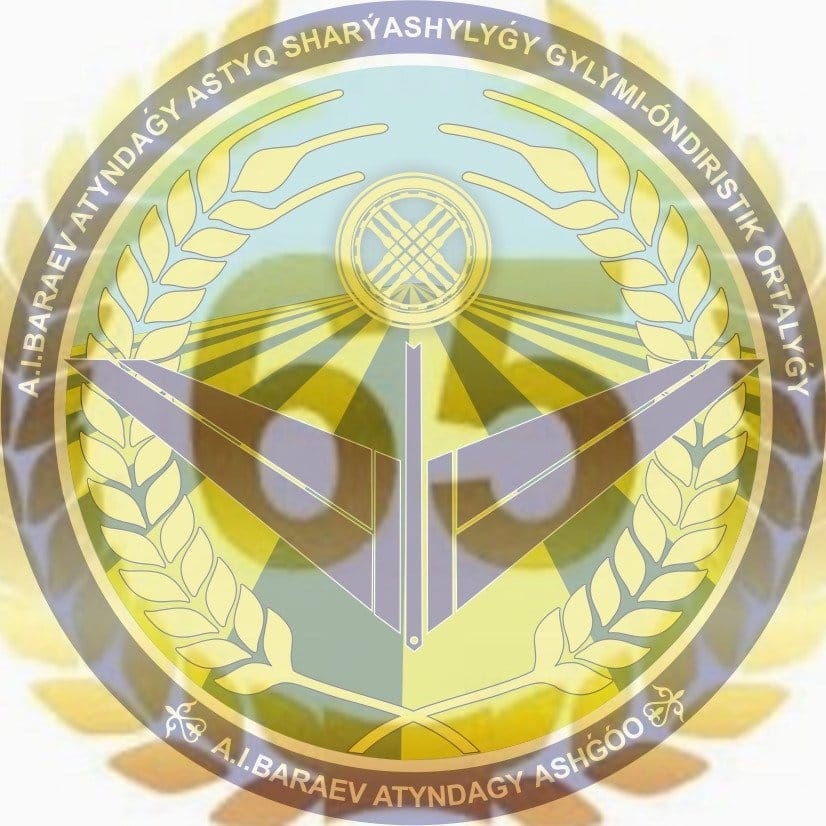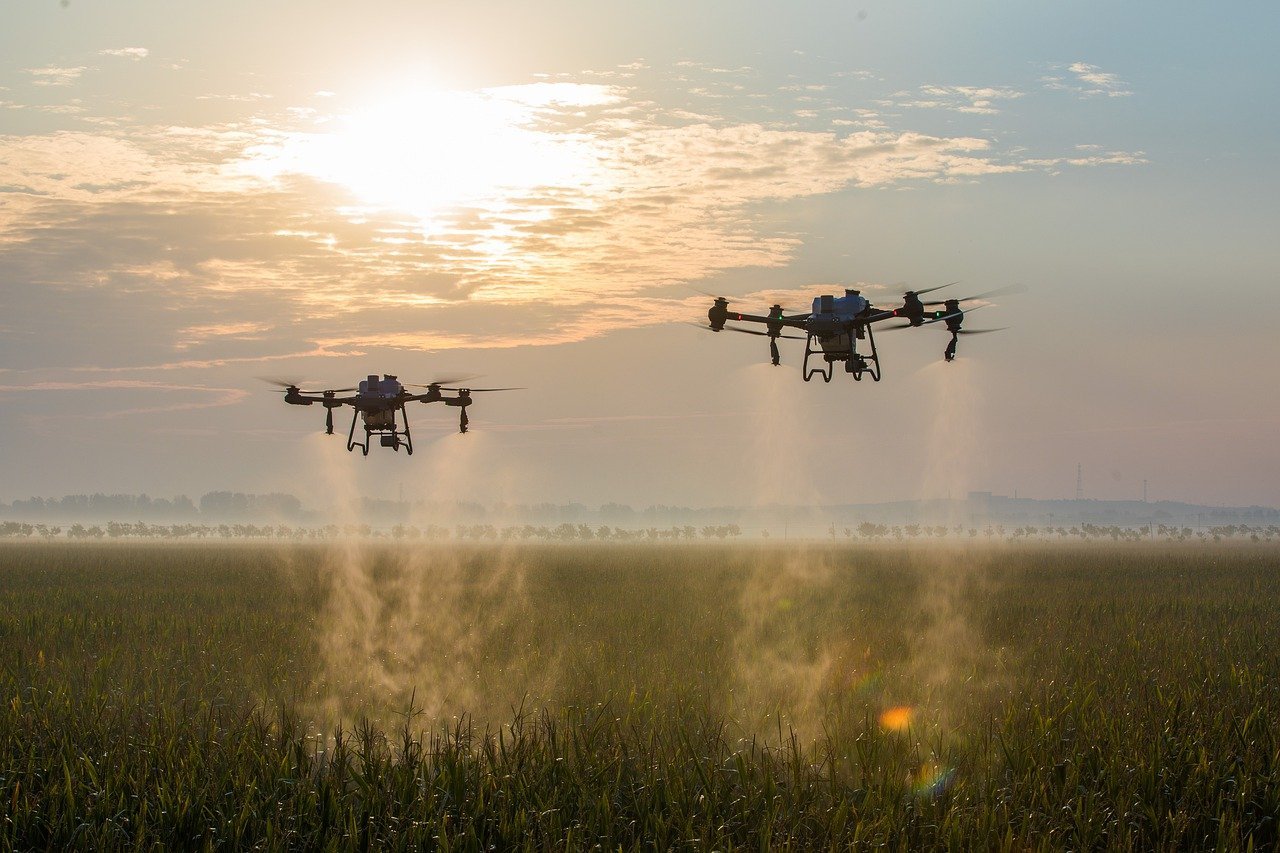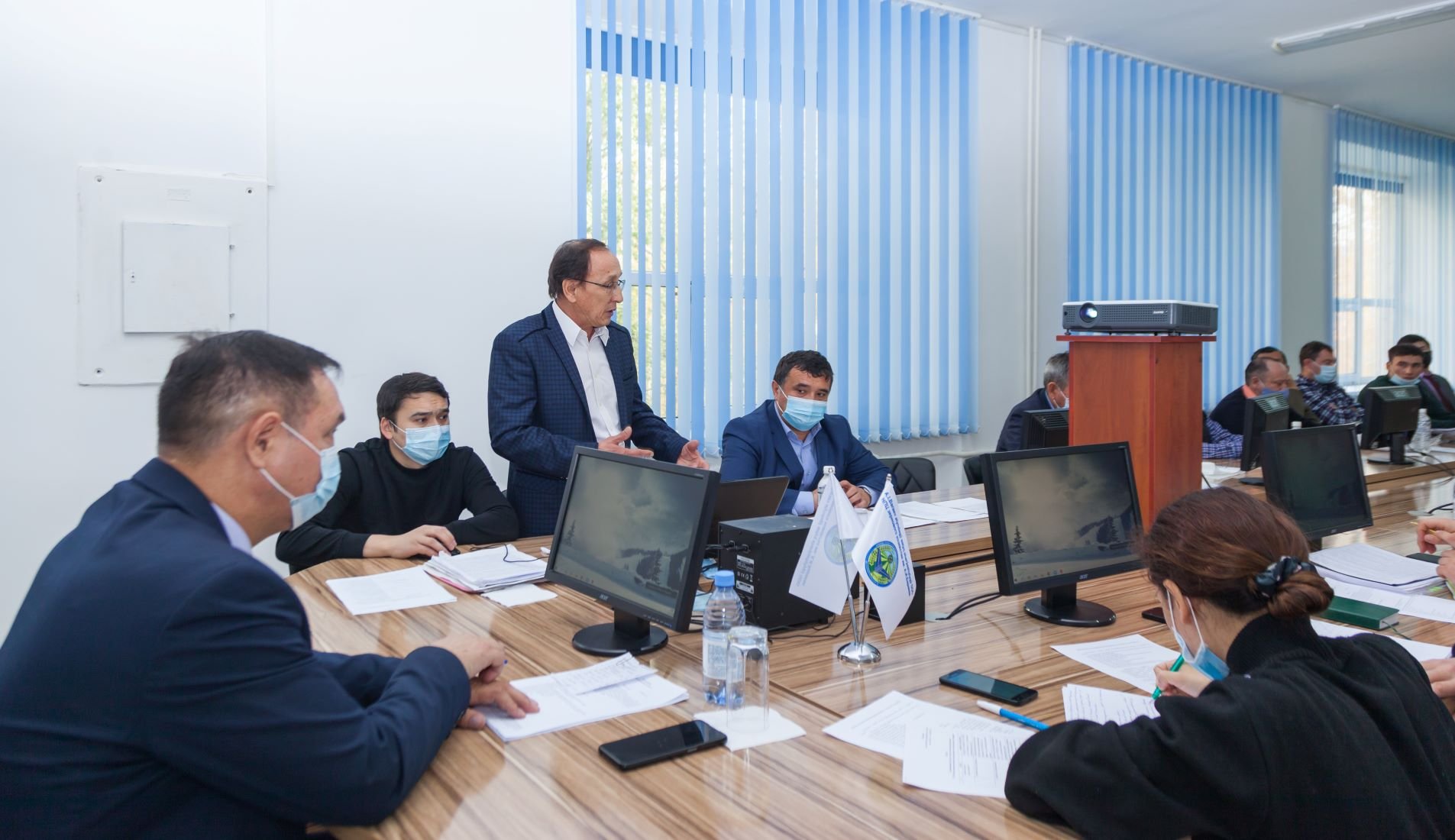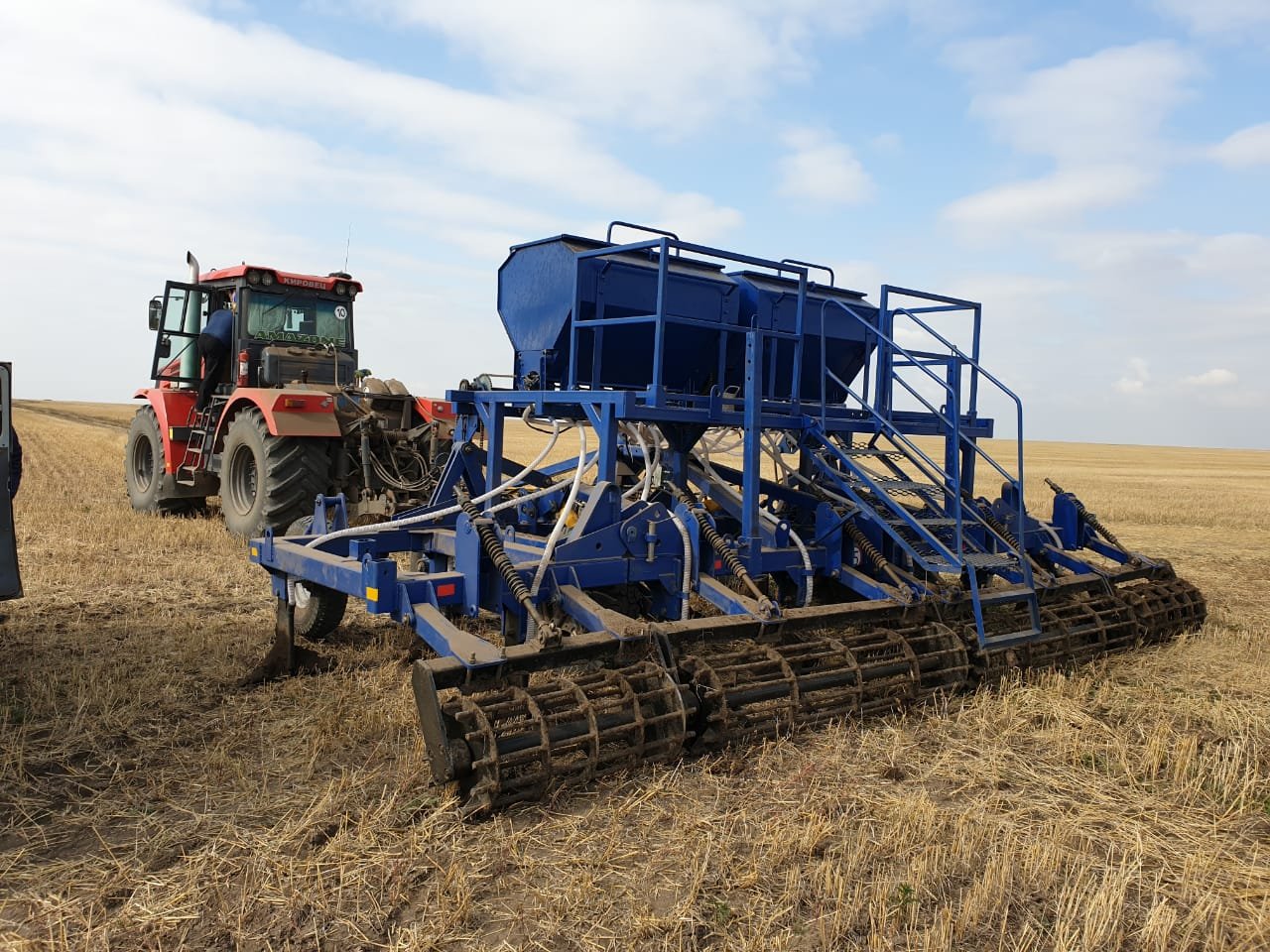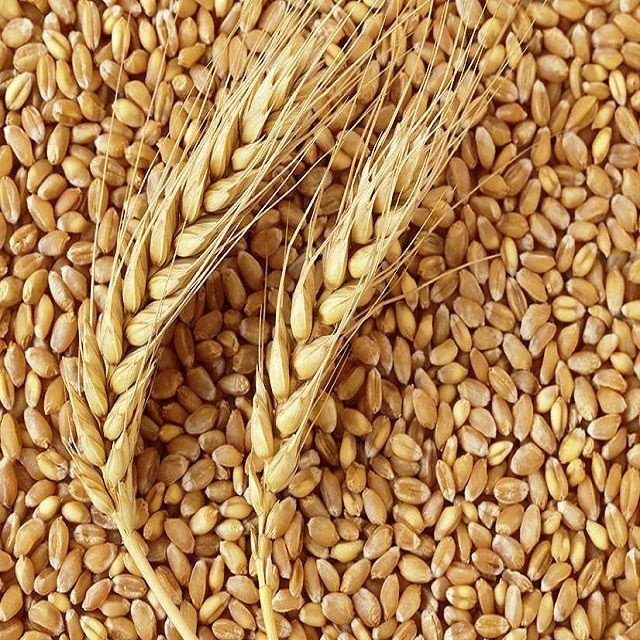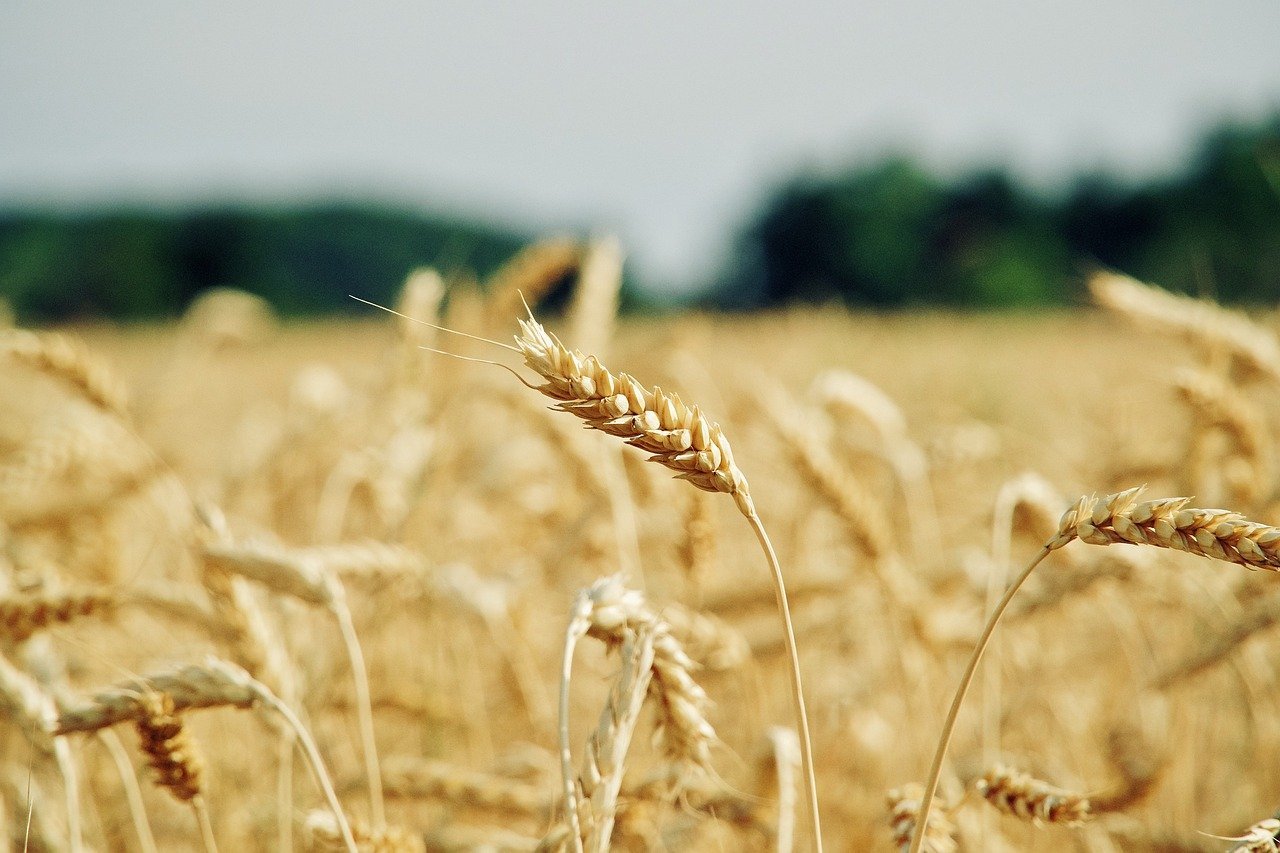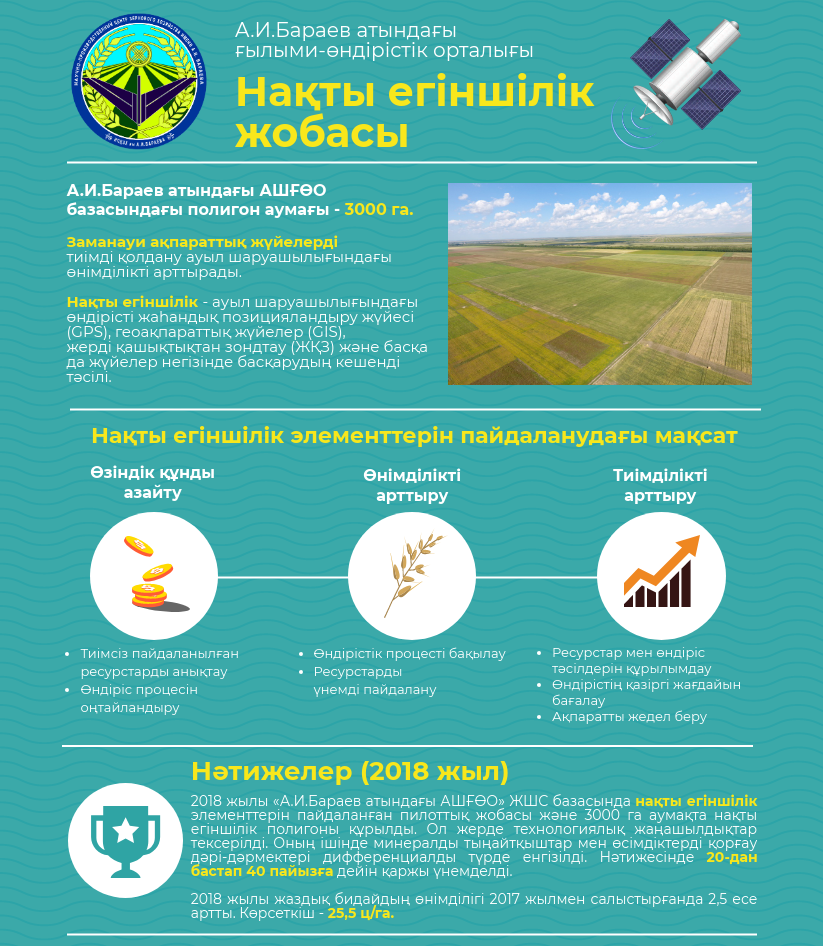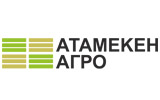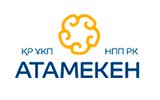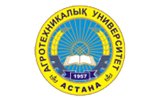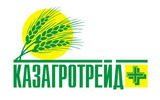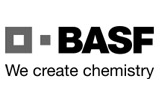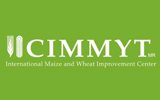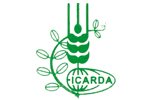Results for 2022
Projects
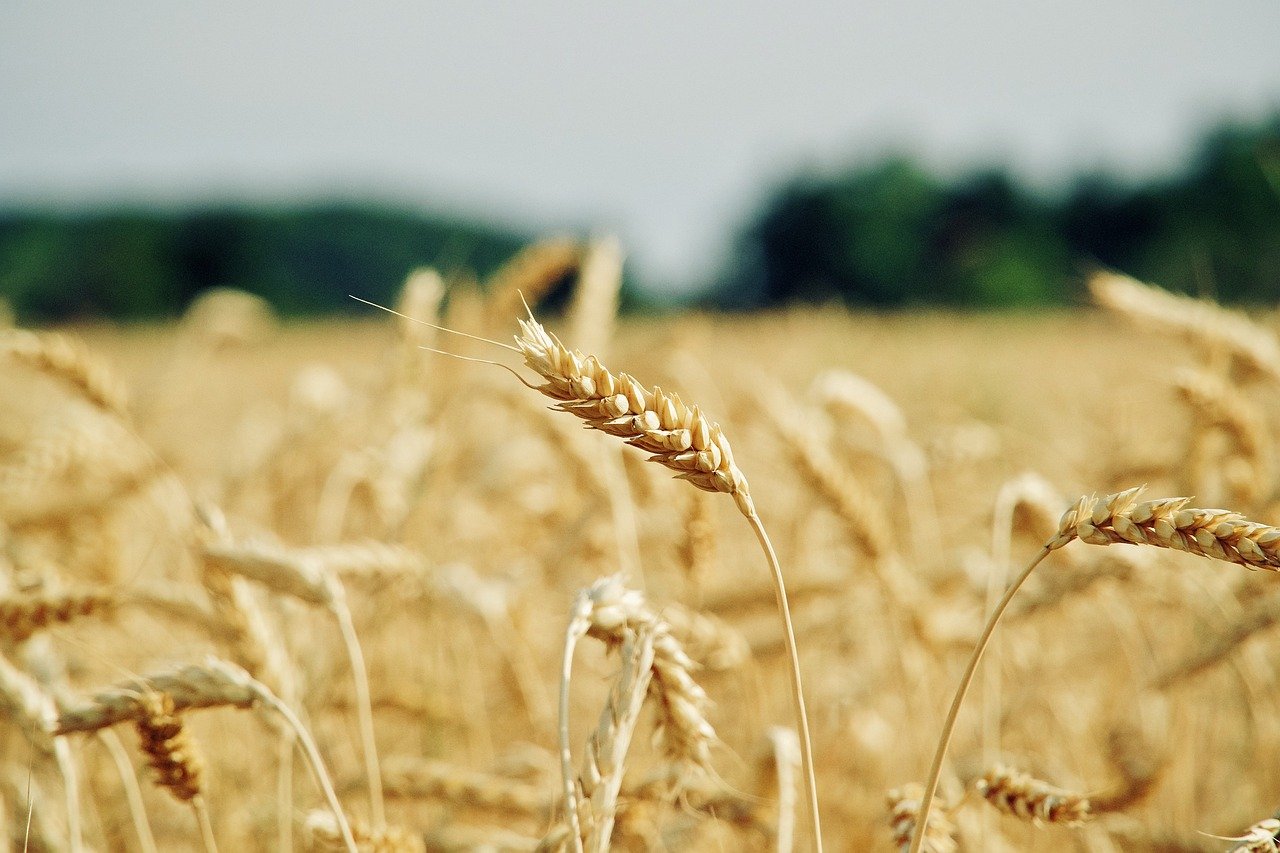
Results of 2022 under T3 (BR10865093) “Development and scientific substantiation of technical and technological parameters for adaptation of space sensing and precision farming technology to current production tasks of agro-industrial complex entities and formation of a reference database necessary for this purpose”
At the 2022 stage, materials on agrotechnological parameters and requirements for soybean, sunflower and flax cultivation technologies were formed for 35 technological operations with minimal technology and 17 technological operations with zero technology. The information database on tillage equipment contains 599 units of tooth harrows, huskers, discators, heavy disc harrows, cultivators and deep-diggers. The formed base of equipment for fertilization and plant protection consists of 223 units, grain cleaning equipment has 82 units. The database of systems and equipment for precision farming contains 84 units. Including parallel and automatic driving systems of 25 units, differentiated application of plant protection products and mineral fertilizers – 17 units, yield mapping – 13 units, remote monitoring of equipment – 23 units, quality control systems of sowing and tillage machines – 6 units.
Implementation of the developed elements and technical solutions of precision farming in the basic farms on the basis of cooperation agreements was continued: agrochemical survey of fields, formation of task maps for differentiated application of materials, remote monitoring of crops: agrochemical survey of soils was conducted in four farms of Akmola region – “Agrofirma RODINA” LLP, “Enbek” LLP, “Novokubanskoe” LLP and “SPC GF named after A.I. Barayev” LLP with total survey area of 2797 ha with the size of elementary plot amounted to 5 ha. In the North-Kazakhstan region researches on practical use of integrated reference and information systems in crop production were conducted in “North-Kazakhstan AES” LLP and base farms. All production areas, fields - total area of 16,000 ha - were included in the program structure. All agricultural machinery equipped with remote monitoring systems, including tractors, sowing complexes, combines, sprayers, trucks, as well as passenger service vehicles, were included in the telematics section. Under the conditions of the year, a reliable economic effect was obtained, expressed in the amount of fuel saved, reduction of time for certain field works, etc. According to the results of the year, savings of more than 60 tons of fuel per season were obtained, which is expressed in 15,600 thousand tenge of market value.
Implementation of the developed elements and technical solutions of precision farming in the base farms has started:
-Application in production testing of information-analytical service for field monitoring in three farms of Akmola region: “Agrofirma Rodina” LLP (356 ha), “Novokubanka” LLP (480 ha), “Enbek” LLP (255 ha);
-Use in production testing of information-analytical service for the purpose of monitoring of fields and condition of crops in two farms of Kostanay region – “Agricultural farm Zarechnoye” (200 ha), farm “Lugovoye” (100 ha); Production testing of differentiated application of mineral fertilizers and differentiated seeding rates of spring wheat seeds in “Trojana” LLP (235 ha);
- production tests of developed elements and technical solutions of precision farming system in three farms of North-Kazakhstan region: “Vlasovskoye” LLP (141 ha), “Grein Reach” LLP (192 ha), “NK AES” LLP (137 ha).
On the subject of research 14 articles were published, of which KKSON.
Within the framework of the program 3 researchers entered postgraduate studies at Omsk GAU, 1 researcher is studying for a bachelor's degree at KATU named after S. Seifullin, 2 researchers are studying at postgraduate studies at Omsk GAU and Perm GAU, 4 researchers are studying at doctoral studies at KATU named after S. Seifullin. 10 training seminars and webinars were held, 196 listeners participated in them, 4 field days.
Leading organization: “Scientific and Production Center of Grain Farming named after A.I. Barayev” LLP.
Program Manager, PhD in Biological Sciences Kunanbayev K.K.
Research under scientific and technical program BR10764908 “To develop a farming system for cultivation of agricultural crops (cereals, legumes, oilseeds and industrial crops) using elements of cultivation technology, differentiated nutrition, plant protection products and machinery for profitable production on the basis of a comparative study of different cultivation technologies for the regions of Kazakhstan”
As a result of research for 2022, experimentally confirmed initial data were obtained on the scientific justification of the intensification of elements of farming systems in agroecological, soil and hydromodule zones of the country, control of erosion processes, reduction of mechanical tillage, diversification and intensification of crop rotation systems, plant nutrition, the use of biostimulators of seeds, plant growth and development, hydromodule zoning of irrigation and rational use of water resources for the development of a methodology for sustainable agricultural production taking into account the changing climate, the use of elements of information technology, modern agricultural machinery and instrumentation.
The system of reduced tillage and No-Till has a positive effect on the qualitative indicators of soil fertility, water-physical properties of soils and crop productivity. The profitability with the No-Till system was 176.3% and with the minimum tillage system – 185.6%. Long-term use of a minimal tillage system and direct sowing does not lead to over-compaction of the soil. In the conditions of an acutely arid climate in the zone of chernozem soils with the use of minimal tillage systems and the No-Till system, the use of nitrogen and phosphorus fertilizers with differentiated control of diseases and weeds. the yield of spring wheat was 22-23 c/ha, barley 31.7-34.5 c/ha, lentils 7.9-8.6 c/ha, oilseed flax 6.1-6.6 c/ha. With the traditional cultivation system without means of intensification, the yield of spring wheat was 15-18 c/ha, barley 20.0-22.0, lentils 3-5 and flax-4.9-5.1 c/ha. The use of deep processing and laser planning of the soil with the use of biofertilizers ZHGU – 2.0 l/ha, BioZZ -2.0 l/ha, WOR Mic -3.0 l/ha increases the yield of cotton to 31.6 c/ha and exceeds the yield of cotton according to traditional technology by 6.0 c/ha and provides net income at the level of – 756800 tenge/ha with a profitability of 270.2%.
Assessment scales of landscape and soil indicators of Almaty, Zhambyl, Turkestan, Kyzylorda, Akmola, and Pavlodar regions have been developed to assess the suitability of lands for irrigated agriculture on the basis of ecological-landscape approach. The dynamics of water resources in the context of water management sites shows potential opportunities for the development of irrigated agriculture based on the balanced use of natural-resource potential of the region and water-saving irrigation technologies.
The ecologically permissible limits of saturation of hydroagrolandscapes with irrigated lands depending on moisture deficiency are justified: from 10 to 15% – in moderately arid and humid-mountainous, from 10 to 15% - arid mountainous and dry foothill and up to 10% very dry, dry and moderately dry zones of Almaty region.
The use of drip irrigation of rice and soybeans increases the economy of water use up to 50-70 % and provides an increase in yield up to 21.5 c/ha. Irrigation water savings in the cultivation of sugar beet by drip irrigation is 32%.
Using GIS technology, a geodata database and contours of irrigated agricultural lands of 6 regions of Kazakhstan were created, containing information on relief, hydrography, infrastructure, socio-economic objects, vegetation. Using GIS technology and a 10-meter Sentinel-2A and 2B satellite image, a physical map, a precipitation map, a map of average annual temperatures, a slope map, an exposure map, as well as a soil map of the regions were created.
Degree of implementation: Production tests have shown the relevance of adaptation at the farm level of the results of research work that needs to be continued in 2023.
Efficiency: The effectiveness of the zero-tillage system in the South Kazakhstan region has been proven. In conditions of drought, when growing winter wheat in bogara conditions, the treatment of seeds and crops with growth stimulants increases the productivity potential of winter wheat to the level of 22.1 c/ha and at cost below the previously developed and recommended dose of mineral fertilizers P45N70 kg/ha. The use of biostimulators of seeds, micro-fertilizers in combination with the No-till system when growing winter wheat increases net income from 79.2 to 128.8 thousand tenge per hectare of sowing.
At the 2022 stage, materials on agrotechnological parameters and requirements for soybean, sunflower and flax cultivation technologies were formed for 35 technological operations with minimal technology and 17 technological operations with zero technology. The information database on tillage equipment contains 599 units of tooth harrows, huskers, discators, heavy disc harrows, cultivators and deep-diggers. The formed base of equipment for fertilization and plant protection consists of 223 units, grain cleaning equipment has 82 units. The database of systems and equipment for precision farming contains 84 units. Including parallel and automatic driving systems of 25 units, differentiated application of plant protection products and mineral fertilizers – 17 units, yield mapping – 13 units, remote monitoring of equipment – 23 units, quality control systems of sowing and tillage machines – 6 units.
Implementation of the developed elements and technical solutions of precision farming in the basic farms on the basis of cooperation agreements was continued: agrochemical survey of fields, formation of task maps for differentiated application of materials, remote monitoring of crops: agrochemical survey of soils was conducted in four farms of Akmola region – “Agrofirma RODINA” LLP, “Enbek” LLP, “Novokubanskoe” LLP and “SPC GF named after A.I. Barayev” LLP with total survey area of 2797 ha with the size of elementary plot amounted to 5 ha. In the North-Kazakhstan region researches on practical use of integrated reference and information systems in crop production were conducted in “North-Kazakhstan AES” LLP and base farms. All production areas, fields - total area of 16,000 ha - were included in the program structure. All agricultural machinery equipped with remote monitoring systems, including tractors, sowing complexes, combines, sprayers, trucks, as well as passenger service vehicles, were included in the telematics section. Under the conditions of the year, a reliable economic effect was obtained, expressed in the amount of fuel saved, reduction of time for certain field works, etc. According to the results of the year, savings of more than 60 tons of fuel per season were obtained, which is expressed in 15,600 thousand tenge of market value.
Implementation of the developed elements and technical solutions of precision farming in the base farms has started:
-Application in production testing of information-analytical service for field monitoring in three farms of Akmola region: “Agrofirma Rodina” LLP (356 ha), “Novokubanka” LLP (480 ha), “Enbek” LLP (255 ha);
-Use in production testing of information-analytical service for the purpose of monitoring of fields and condition of crops in two farms of Kostanay region – “Agricultural farm Zarechnoye” (200 ha), farm “Lugovoye” (100 ha); Production testing of differentiated application of mineral fertilizers and differentiated seeding rates of spring wheat seeds in “Trojana” LLP (235 ha);
- production tests of developed elements and technical solutions of precision farming system in three farms of North-Kazakhstan region: “Vlasovskoye” LLP (141 ha), “Grein Reach” LLP (192 ha), “NK AES” LLP (137 ha).
On the subject of research 14 articles were published, of which KKSON.
Within the framework of the program 3 researchers entered postgraduate studies at Omsk GAU, 1 researcher is studying for a bachelor's degree at KATU named after S. Seifullin, 2 researchers are studying at postgraduate studies at Omsk GAU and Perm GAU, 4 researchers are studying at doctoral studies at KATU named after S. Seifullin. 10 training seminars and webinars were held, 196 listeners participated in them, 4 field days.
Leading organization: “Scientific and Production Center of Grain Farming named after A.I. Barayev” LLP.
Program Manager, PhD in Biological Sciences Kunanbayev K.K.
Research under scientific and technical program BR10764908 “To develop a farming system for cultivation of agricultural crops (cereals, legumes, oilseeds and industrial crops) using elements of cultivation technology, differentiated nutrition, plant protection products and machinery for profitable production on the basis of a comparative study of different cultivation technologies for the regions of Kazakhstan”
As a result of research for 2022, experimentally confirmed initial data were obtained on the scientific justification of the intensification of elements of farming systems in agroecological, soil and hydromodule zones of the country, control of erosion processes, reduction of mechanical tillage, diversification and intensification of crop rotation systems, plant nutrition, the use of biostimulators of seeds, plant growth and development, hydromodule zoning of irrigation and rational use of water resources for the development of a methodology for sustainable agricultural production taking into account the changing climate, the use of elements of information technology, modern agricultural machinery and instrumentation.
The system of reduced tillage and No-Till has a positive effect on the qualitative indicators of soil fertility, water-physical properties of soils and crop productivity. The profitability with the No-Till system was 176.3% and with the minimum tillage system – 185.6%. Long-term use of a minimal tillage system and direct sowing does not lead to over-compaction of the soil. In the conditions of an acutely arid climate in the zone of chernozem soils with the use of minimal tillage systems and the No-Till system, the use of nitrogen and phosphorus fertilizers with differentiated control of diseases and weeds. the yield of spring wheat was 22-23 c/ha, barley 31.7-34.5 c/ha, lentils 7.9-8.6 c/ha, oilseed flax 6.1-6.6 c/ha. With the traditional cultivation system without means of intensification, the yield of spring wheat was 15-18 c/ha, barley 20.0-22.0, lentils 3-5 and flax-4.9-5.1 c/ha. The use of deep processing and laser planning of the soil with the use of biofertilizers ZHGU – 2.0 l/ha, BioZZ -2.0 l/ha, WOR Mic -3.0 l/ha increases the yield of cotton to 31.6 c/ha and exceeds the yield of cotton according to traditional technology by 6.0 c/ha and provides net income at the level of – 756800 tenge/ha with a profitability of 270.2%.
Assessment scales of landscape and soil indicators of Almaty, Zhambyl, Turkestan, Kyzylorda, Akmola, and Pavlodar regions have been developed to assess the suitability of lands for irrigated agriculture on the basis of ecological-landscape approach. The dynamics of water resources in the context of water management sites shows potential opportunities for the development of irrigated agriculture based on the balanced use of natural-resource potential of the region and water-saving irrigation technologies.
The ecologically permissible limits of saturation of hydroagrolandscapes with irrigated lands depending on moisture deficiency are justified: from 10 to 15% – in moderately arid and humid-mountainous, from 10 to 15% - arid mountainous and dry foothill and up to 10% very dry, dry and moderately dry zones of Almaty region.
The use of drip irrigation of rice and soybeans increases the economy of water use up to 50-70 % and provides an increase in yield up to 21.5 c/ha. Irrigation water savings in the cultivation of sugar beet by drip irrigation is 32%.
Using GIS technology, a geodata database and contours of irrigated agricultural lands of 6 regions of Kazakhstan were created, containing information on relief, hydrography, infrastructure, socio-economic objects, vegetation. Using GIS technology and a 10-meter Sentinel-2A and 2B satellite image, a physical map, a precipitation map, a map of average annual temperatures, a slope map, an exposure map, as well as a soil map of the regions were created.
Degree of implementation: Production tests have shown the relevance of adaptation at the farm level of the results of research work that needs to be continued in 2023.
Efficiency: The effectiveness of the zero-tillage system in the South Kazakhstan region has been proven. In conditions of drought, when growing winter wheat in bogara conditions, the treatment of seeds and crops with growth stimulants increases the productivity potential of winter wheat to the level of 22.1 c/ha and at cost below the previously developed and recommended dose of mineral fertilizers P45N70 kg/ha. The use of biostimulators of seeds, micro-fertilizers in combination with the No-till system when growing winter wheat increases net income from 79.2 to 128.8 thousand tenge per hectare of sowing.
539 -рет қаралды



